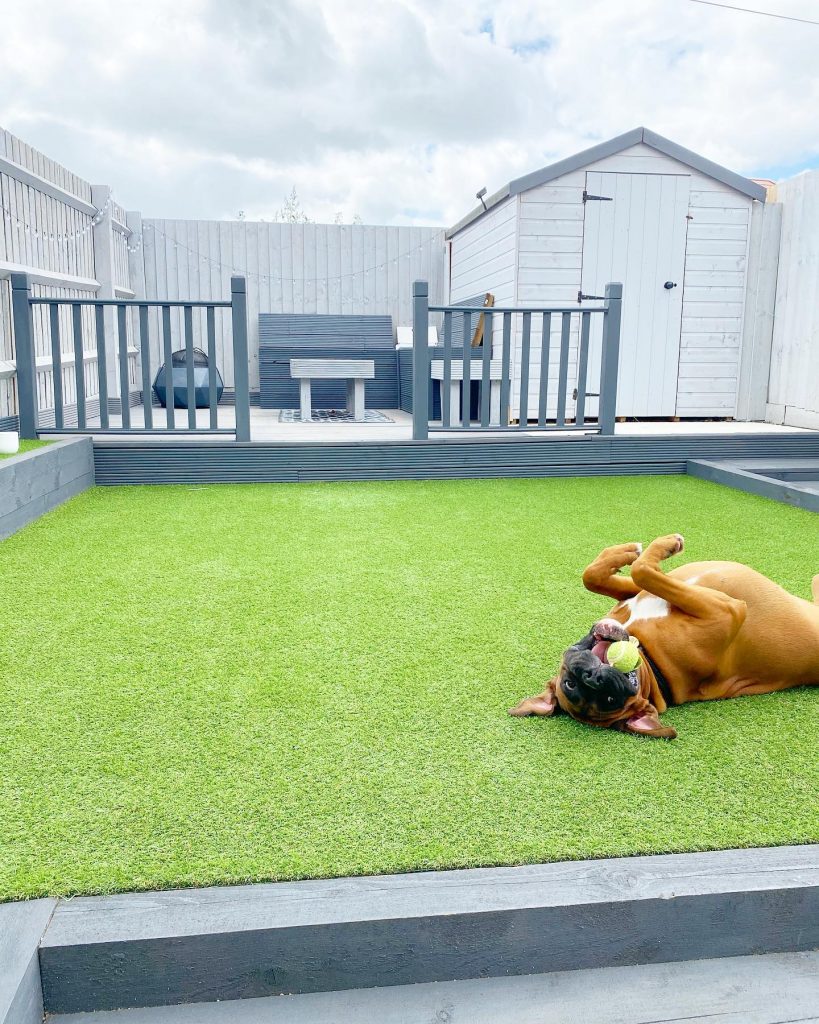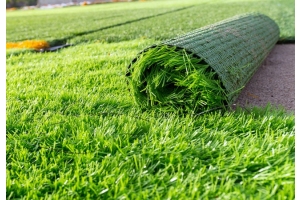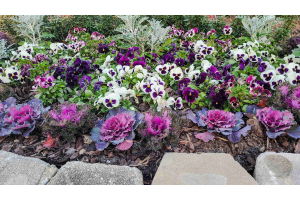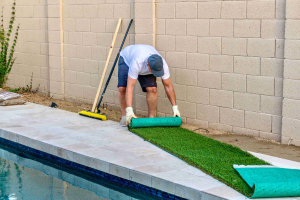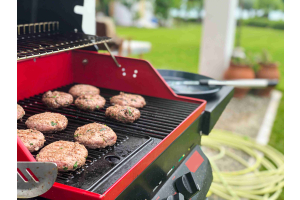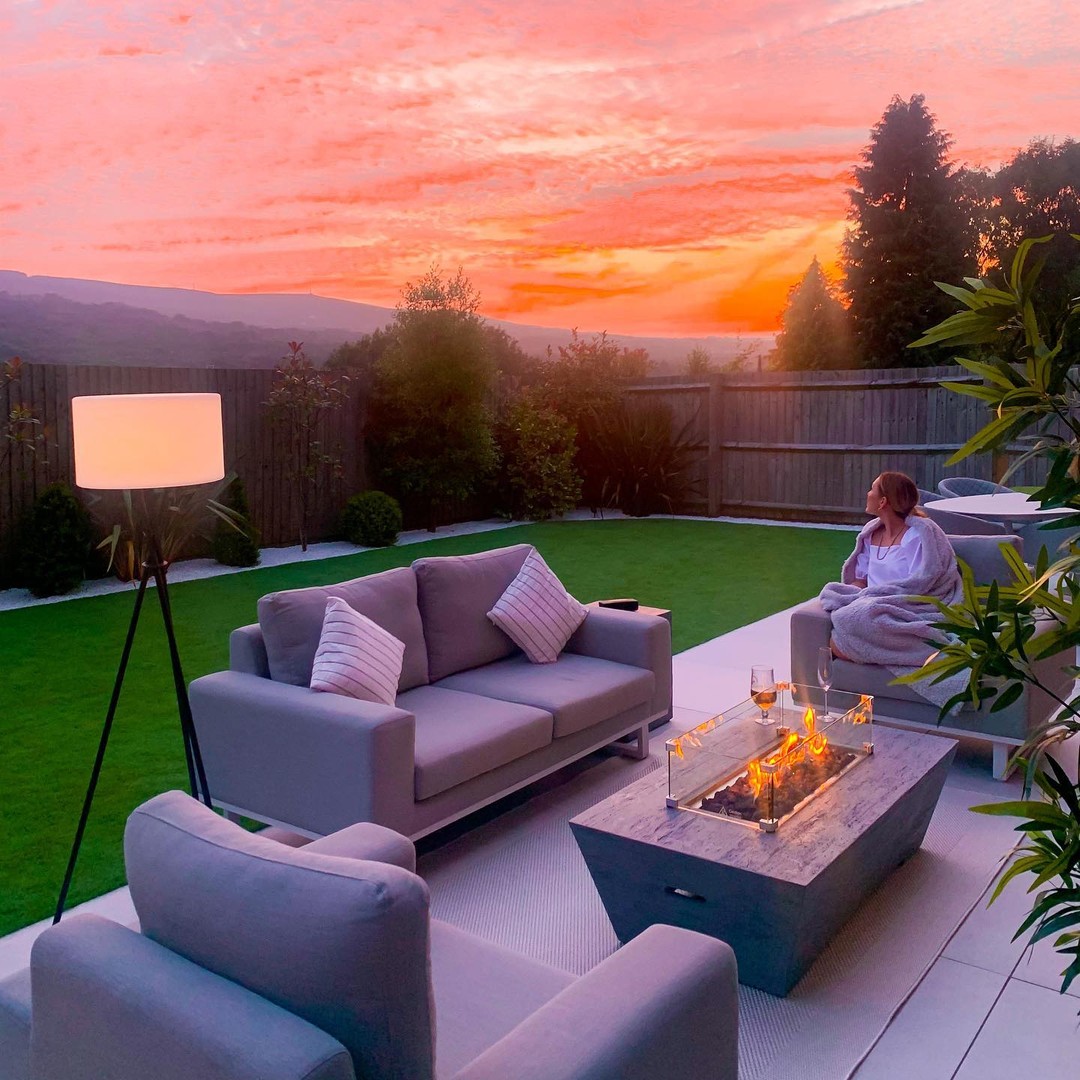
If you have artificial grass or are wanting to install it, the colder months of the year can make you wonder if the sometimes harsh weather conditions affect your artificial lawn. In this blog, we’ll talk you through the effects of the cold, and how to take care of your artificial grass in winter.
Can you Install Artificial Grass in Winter?
First things first, let’s clear up the commonly asked questions. ‘Can you install artificial grass in winter?’
You can indeed.
Artificial grass can be installed all year round. In fact, autumn and winter are actually better times of the year to lay your artificial lawn as the ground isn’t as hard as it is in the summer. This means that any excavations needed will be easier thanks to softer ground.
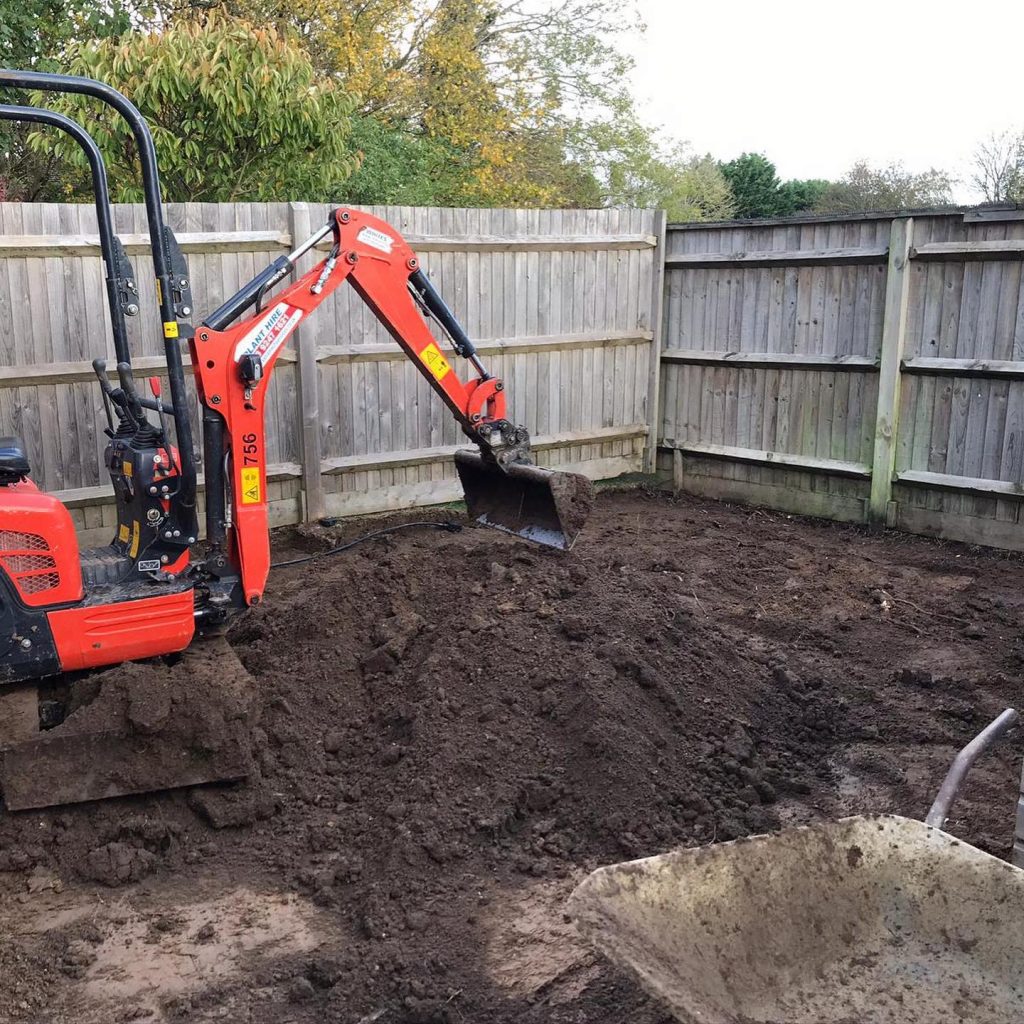
Yes, artificial grass can be installed all year round, whatever the weather, but one thing to be cautious of is site conditions and your safety in these extreme weather conditions. Storms and floods may create a hazardous site, and should be avoided where possible.
If you’re one for getting out the gardening gloves and are attempting a DIY fitting, our handy installation guide can help you do so correctly.
Effects of Winter on Artificial Grass
Artificial grass is extremely durable and can handle weather extremes, being water resistant with quick drying time.
Snow, ice and frost in the colder months may temporarily harden your artificial grass. If you have children or pets, it’s important to be cautious of this. Your grass may not be as comfortable and soft underfoot on the paws of your four legged friends, and snow and ice on your grass may result in trips or falls for the younger ones prior to the winter sun melting it away.
These effects are temporary and your grass will return to its normal soft and cushioned self once melted. Ready to enjoy again in the summer.
Another effect you may be worried about is all the excess liquid that comes with winter. Snow and ice are all fun and games when making a snowman, but will it ruin your luscious lawn?
You’ll be pleased to know that it doesn’t! Artificial grass features drainage holes for excess moisture and water. So no need to worry about flooding and water logging.
Unlike natural grass, those puddles will be drained away without leaving you with those pesky dried out patches. Your artificial grass will continue to deliver that stunning evergreen landscape.
Protecting your Artificial Lawn
Now we’ve mentioned the minor effects that the winter can have on your beautiful lawn. These effects are nothing to worry about and are short-term.
They also don’t mean you can’t go out in your garden and enjoy a good old fashioned snowball fight with the kids. Just make sure to wrap up warm, and have a cup of hot tea waiting for when you come back in.
If you’re not planning on using your garden, and want to use a protective measure from the cold weather, you can.
Snow, frost and ice stiffening your blades of grass can be prevented by covering it with tarpaulin.
Though this isn’t necessary, it’s an option for that added peace of mind.
We hope this blog gave you all the information you needed on the effects of winter on your artificial grass and how to cater for them. If you have any other questions, get in touch with one of our experts who will be more than happy to help.







